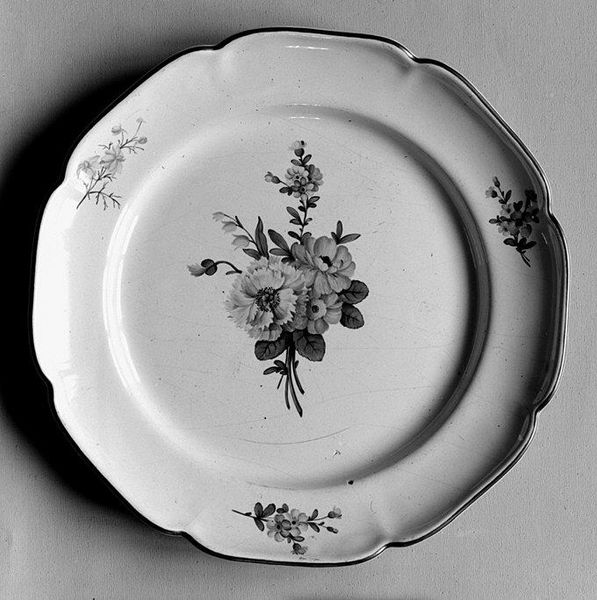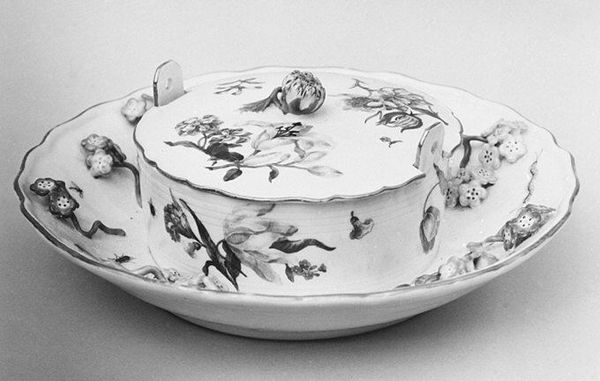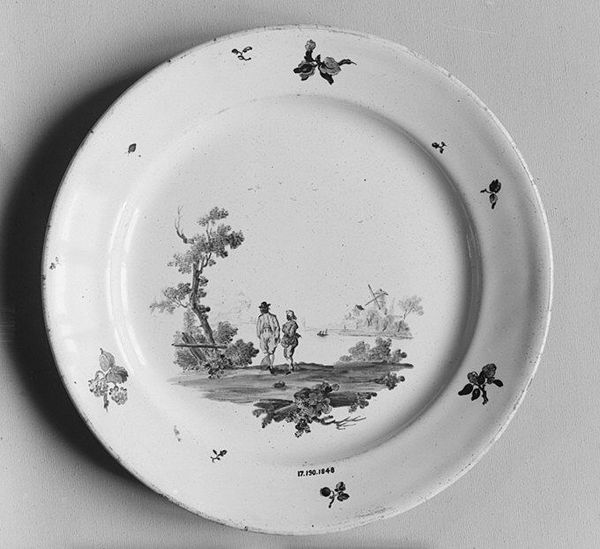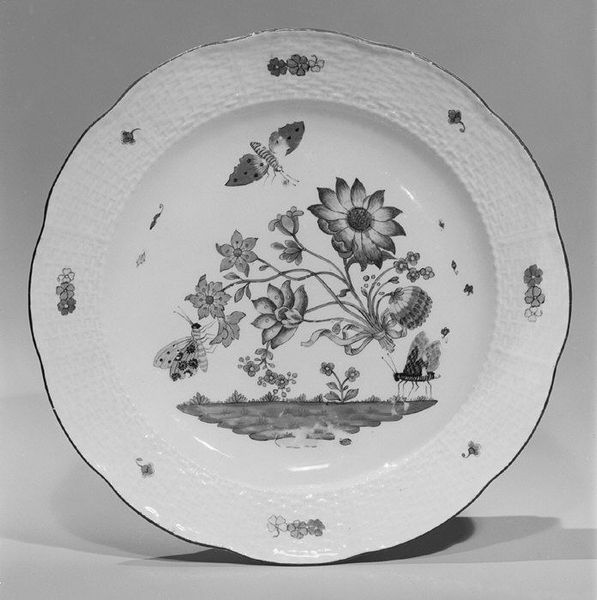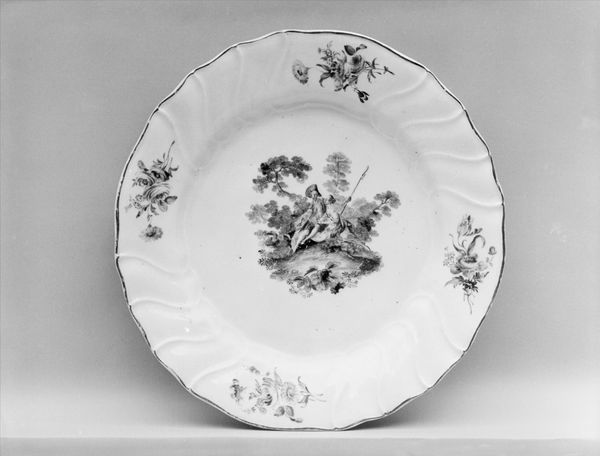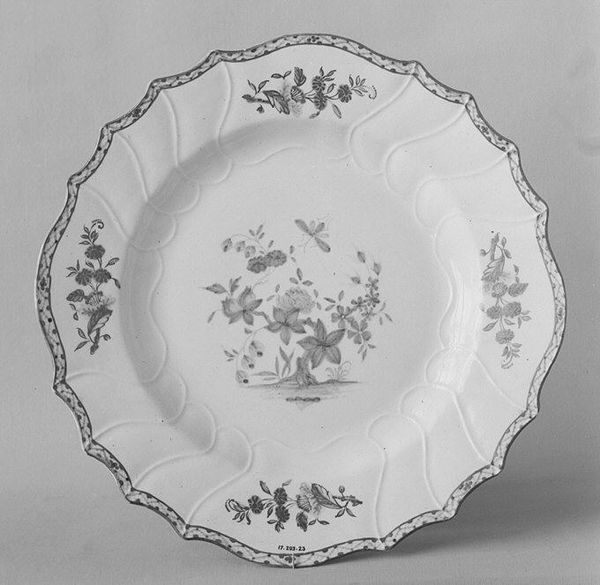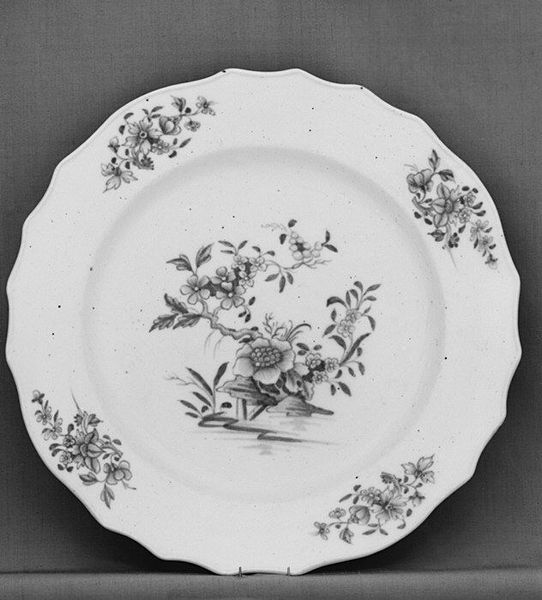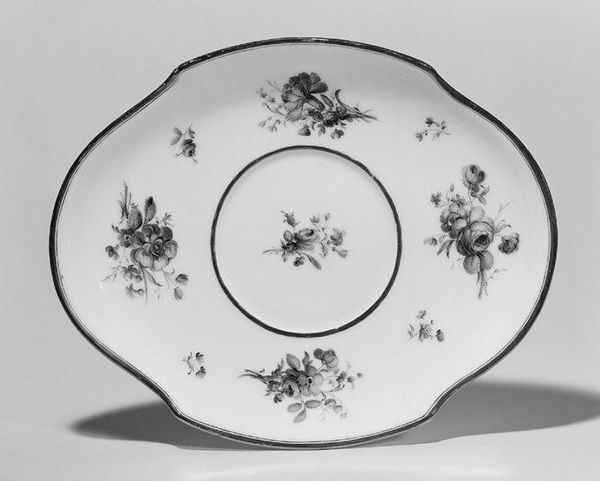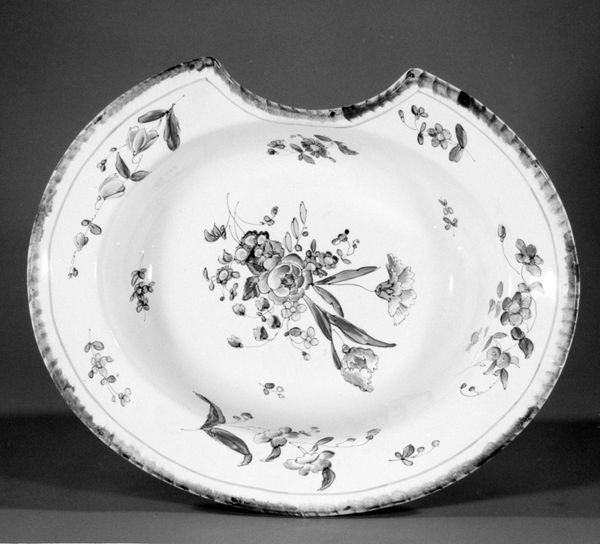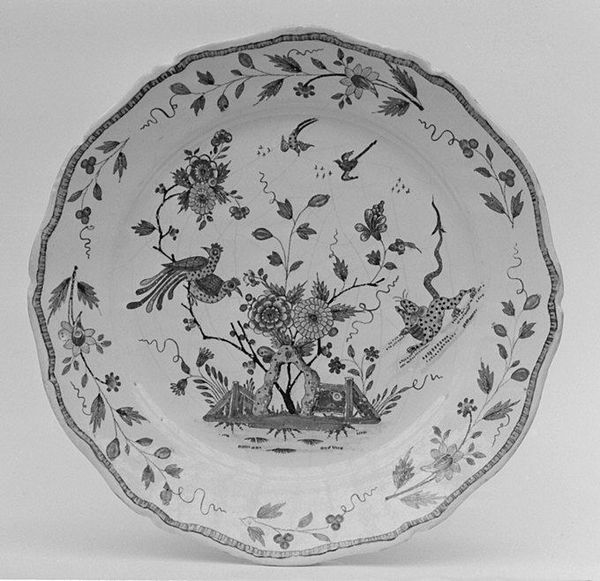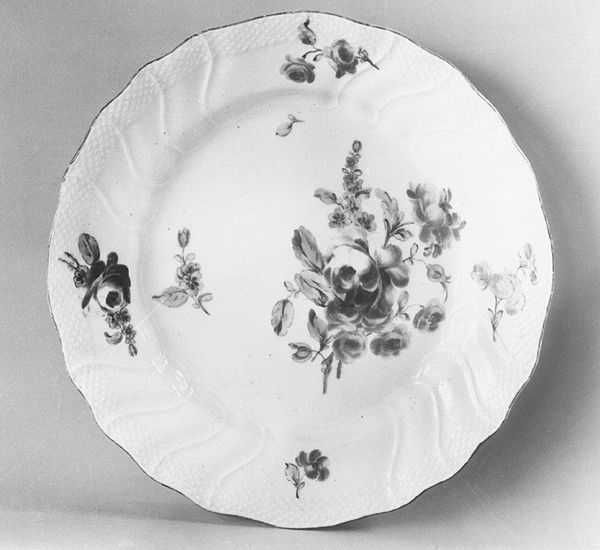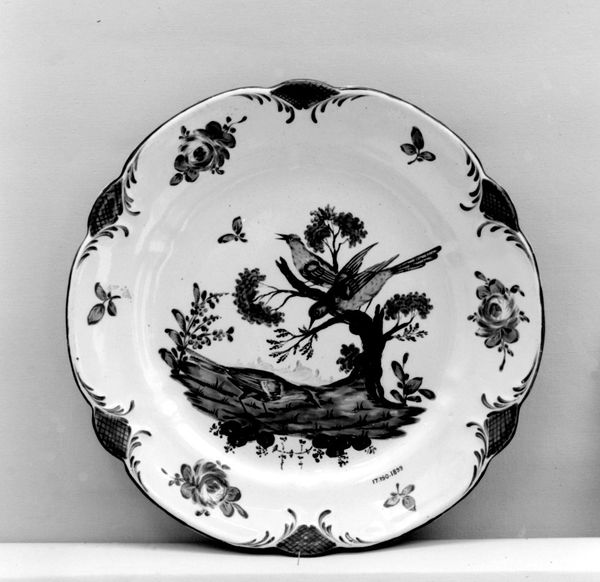
ceramic, porcelain
#
baroque
#
ceramic
#
porcelain
#
decorative-art
Dimensions: Diameter: 10 3/16 in. (25.9 cm)
Copyright: Public Domain
Curator: This object before us, a “Plate,” was produced by the Meissen Manufactory between 1730 and 1740. You can find it at the Metropolitan Museum of Art. Editor: It's oddly charming, isn't it? Such a delicate, almost playful feel with that whimsical creature in the center and those subtle baroque floral decorations around the edge. But the monochrome design has an interesting tension; it also feels austere, even melancholic. Curator: Interesting observation. This kind of porcelain was, of course, immensely popular during the Baroque period and signified considerable wealth and power. Examining the techniques and labour invested reveals insights into social status, artistic production, and access to precious goods like Meissen porcelain. The very making of it – the materials, the intense labor, and the market surrounding it – shaped its artistic and social value. Editor: Precisely, and the plate's presence in a museum highlights how we choose to present and interpret history. Baroque decorative arts served very specific functions within elite society, reflecting status through patronage and the collection of rarities, influencing social trends. Looking at this plate raises questions about the transformation of domestic items into revered artworks, about how we project present values onto the past. The plate’s presence here elevates it from everyday to exceptional. Curator: Exactly, it brings the story of artistic creation to a new light, particularly considering the social landscape back then, the artisans that shaped and perfected their skillset, the consumers of these precious commodities…and even us, the modern viewers that reassess the relevance and values behind such work. Editor: Indeed. Viewing the plate through both our lenses allows us to reconsider art's journey across centuries, from its role in courts to its current existence in museums. Hopefully it provokes all of us to contemplate art's place in history and its evolving interaction with the public.
Comments
No comments
Be the first to comment and join the conversation on the ultimate creative platform.

